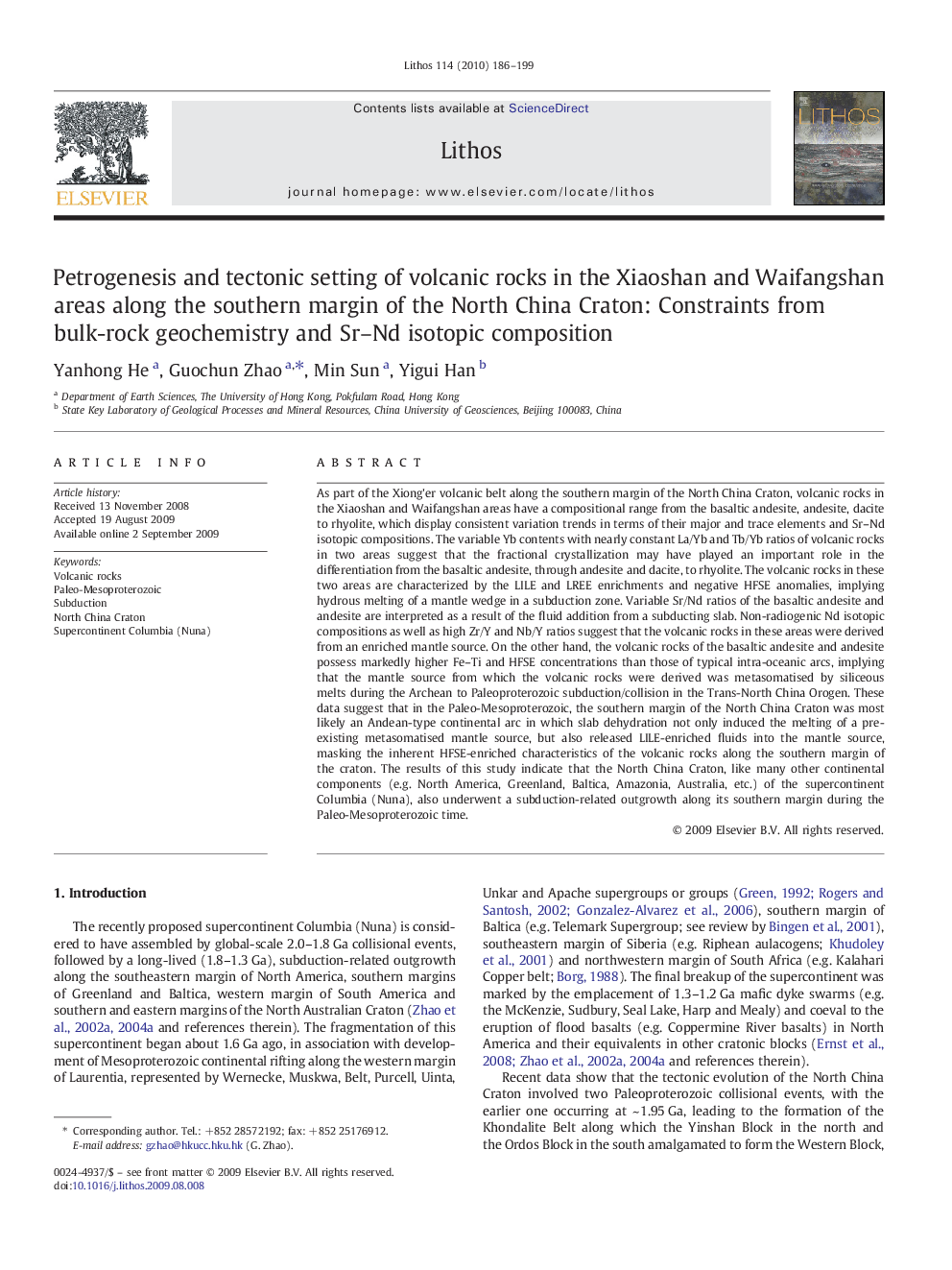| کد مقاله | کد نشریه | سال انتشار | مقاله انگلیسی | نسخه تمام متن |
|---|---|---|---|---|
| 4717312 | 1638737 | 2010 | 14 صفحه PDF | دانلود رایگان |

As part of the Xiong'er volcanic belt along the southern margin of the North China Craton, volcanic rocks in the Xiaoshan and Waifangshan areas have a compositional range from the basaltic andesite, andesite, dacite to rhyolite, which display consistent variation trends in terms of their major and trace elements and Sr–Nd isotopic compositions. The variable Yb contents with nearly constant La/Yb and Tb/Yb ratios of volcanic rocks in two areas suggest that the fractional crystallization may have played an important role in the differentiation from the basaltic andesite, through andesite and dacite, to rhyolite. The volcanic rocks in these two areas are characterized by the LILE and LREE enrichments and negative HFSE anomalies, implying hydrous melting of a mantle wedge in a subduction zone. Variable Sr/Nd ratios of the basaltic andesite and andesite are interpreted as a result of the fluid addition from a subducting slab. Non-radiogenic Nd isotopic compositions as well as high Zr/Y and Nb/Y ratios suggest that the volcanic rocks in these areas were derived from an enriched mantle source. On the other hand, the volcanic rocks of the basaltic andesite and andesite possess markedly higher Fe–Ti and HFSE concentrations than those of typical intra-oceanic arcs, implying that the mantle source from which the volcanic rocks were derived was metasomatised by siliceous melts during the Archean to Paleoproterozoic subduction/collision in the Trans-North China Orogen. These data suggest that in the Paleo-Mesoproterozoic, the southern margin of the North China Craton was most likely an Andean-type continental arc in which slab dehydration not only induced the melting of a pre-existing metasomatised mantle source, but also released LILE-enriched fluids into the mantle source, masking the inherent HFSE-enriched characteristics of the volcanic rocks along the southern margin of the craton. The results of this study indicate that the North China Craton, like many other continental components (e.g. North America, Greenland, Baltica, Amazonia, Australia, etc.) of the supercontinent Columbia (Nuna), also underwent a subduction-related outgrowth along its southern margin during the Paleo-Mesoproterozoic time.
Journal: Lithos - Volume 114, Issues 1–2, January 2010, Pages 186–199